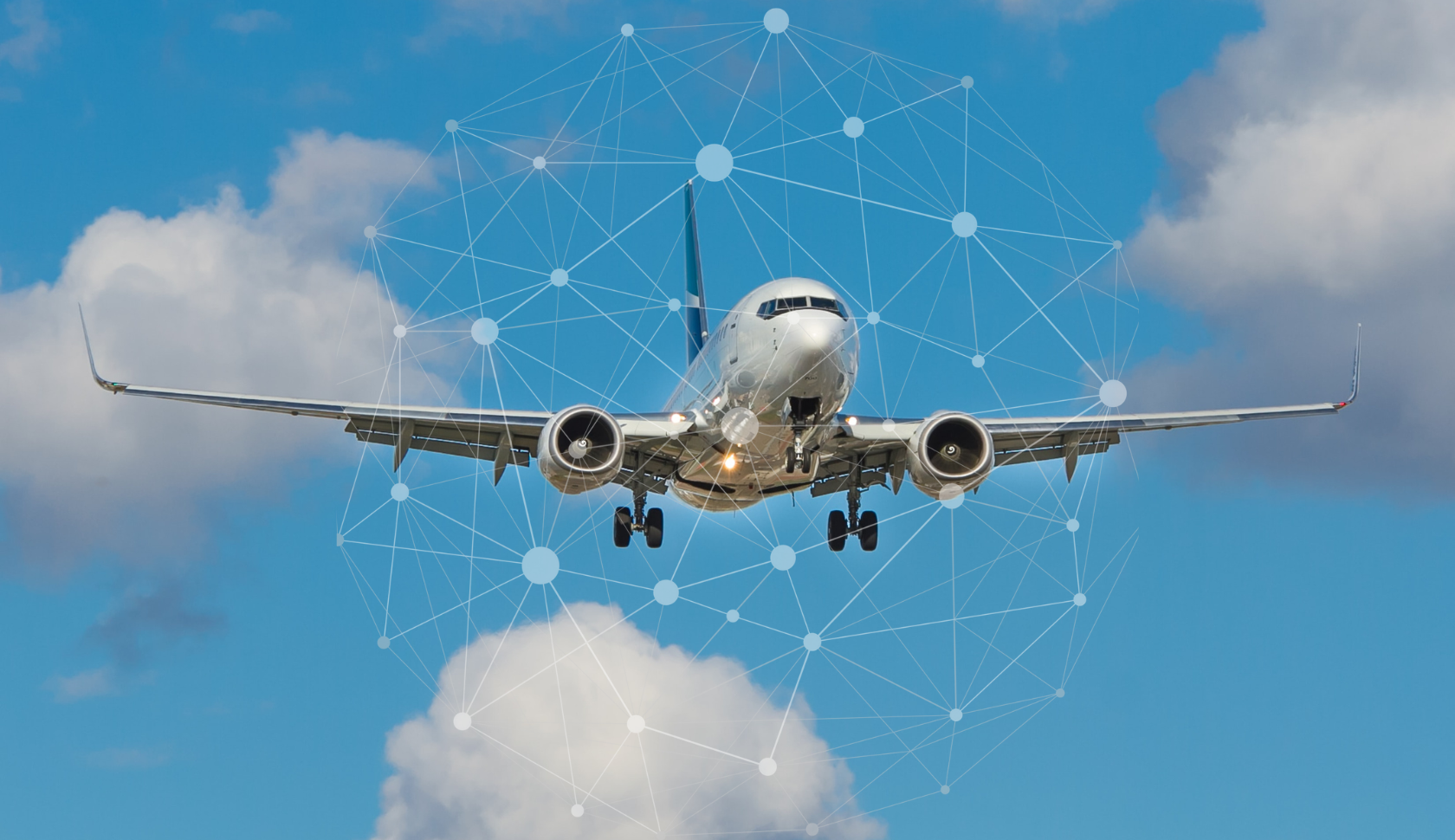Flying across the globe has become commonplace. In 2019 alone, over 38 million flights were made, carrying over 4 billion passengers. But, as big as this number sounds, the aviation industry was still facing an array of problems. Even prior to the pandemic, airlines were experiencing an average profit loss of $17 billion a year. This, of course, was made significantly worse due to Covid-19, which restricted non-essential travel and subsequently ushered in a period of retrenchments, grounding of entire plane fleets, and the laying off of airline personnel.
Now, airlines are set to face even more challenges including the rising costs of fuel and a looming recession, with experts believing it will have a heavy impact on booking sales. This coupled with aviation’s requirement to comply with climate change targets and make air travel more sustainable is a huge shift in industry priorities. We can already see this shift occurring in other industries, where large organisations, such as Mars, are cutting their business travel by 50% to reduce their scope 3 emissions]. Aviation is at a crossroads; the need to introduce change is becoming more vital by the day, but in order to introduce those changes, they must overcome certain challenges
So what are some of the main challenges the Aviation industry is currently facing?
The struggle to achieve Net Zero for 2050
“The aviation industry post COVID-19 will undoubtedly be influenced by the notion of a green recovery” – The European Union Aviation Safety Agency
The climate crisis and aviation’s contribution to rising greenhouse gas emissions is one of the most undeniable challenges faced by the industry to date. Who can forget the infographics that were shared on social media of how much carbon emissions dropped when air travel was grounded at the beginning of the COVID-19 pandemic in 2020?

Currently, aviation contributes to approximately 3% of the world’s carbon emissions, but there is the potential for that figure to triple by 2050 if no serious preventative measures are taken.
To remedy this, the UN International Civil Aviation Organisation (ICAO) launched an announcement of a shared goal for carbon neutrality in 2016, requiring airlines around the world to work together towards this target with the hopes of making a significant impact as a collective. The International Air Transport Association ( IATA ) firmly believes that airlines require the coordinated support and efforts of the entire aviation industry, including airlines, airports, manufacturers, and all associated suppliers in order to achieve Net Zero. But this is no easy feat, it requires the establishment of strong, long-term alignment across multiple organisations and bodies within the industry as well as every airline’s extended supply chains.
The successful collaboration between airlines and their suppliers is the most vital element when it comes to achieving a sustainability target, as supply chains account for nearly 80% of an organisation’s carbon emissions. By working closely with their suppliers and manufacturers, airlines have the opportunity to have a clear account of where their carbon emissions are being created most and which methods can help to make a significant impact on their carbon footprint.
Supplier Day helps to break through the traditional barriers between Procurement and suppliers to establish the exchange of information and resources required by both parties to achieve overarching goals. By working with their suppliers, airlines avoid the mistake of bypassing their scope 3 emissions and instead can tackle their carbon emissions at the root, enabling their suppliers to not only participate in their journey to Net Zero but openly advocate and champion it within their own supplier ecosystem. A well-established and communicated strategy is key to establishing long-term, widespread impact across the entirety of an organisation’s supply ecosystem, including within the aviation industry.
Without this, aviation would have an extremely difficult time achieving this goal within the given timeline.
Overall delay in technological advancements
Unfortunately, one of the main elements aviation requires to achieve these sustainability goals is serious technological advancement. Whether they are focusing on alternative fuels or net zero aircrafts, the technology required to produce wide-scale impact is still years away.
It is crucial that we support the rapid development of technologies that maintain the benefits of air travel whilst maximising the opportunities that decarbonisation brings – Department of Transport, UK Government
As pressures mount to push progress toward net zero, the alternatives currently presented as replacements, like biofuel, are in fact short-term alternatives. As the Aviation industry faces problems such as insufficient quantities of these ‘alternatives’ and an inability to sustain them in the long term, true progression can only be achieved through technological developments.
The biggest advancement we are hoping to see in the near future is the production of the long-awaited electric plane! The shift to hybrid/full electric has been successfully adapted within the car industry but the introduction of electric planes would revolutionise the aviation industry, essentially eliminating carbon emissions and keeping the industry on track for being net neutral by 2050.
It is currently being tested for short-haul flights. In fact, Dutch airline KLM has found considerable positive results with this, successfully flying a commercial plane from Amsterdam to Madrid powered only by synthetic fuel. However, the implementation of such technology for long-haul flights is still many years away.
While this challenge cannot be overcome in a simple fashion, extensive progression can be made when airlines choose to work closely and collaborate effectively with their suppliers and complementary organisations. Innovation is the foundation of technological developments and innovating with suppliers allows for the exchange of ideas, resources, and R&D that could produce industry-shaping tech, with a core focus of significantly reducing the aviation industry’s carbon footprint, sooner than expected.
So how can airlines begin to solve these challenges? Well, the answer lies with your supply chain
It is clear that collaborating with supply chains holds the key to turning these challenges into effective green industry practices. Aligning with suppliers and creating spaces for collaboration between complementary organisations will significantly impact both the generation of innovative ideas and the speed at which they can be executed. In fact, externally sourced innovation commercialises 40% faster than homegrown ideas. Therefore, for airlines to achieve their goals they need to move away from siloes and open the doors to collaboration and innovation with their suppliers.
In working with our manufacturing clients, including Siemens and Bayer, we have seen that supplier events are an effective way of building ecosystems of shared responsibility. Our clients have recognised that they have a symbiotic relationship with suppliers and therefore, opening the door to supplier collaboration helps them to achieve their goals successfully.
The starting point is creating the space where conversations between suppliers become the cornerstone of your supplier relationship management programme. They encourage the exchange of ideas and allow the space for your visions, strategies and goals to grow into something far bigger than you could ever have imagined. And as always, these amazing ideas start with supplier-focused events like a supplier day.
Read more on what a supplier day is and why they are so important HERE
Why host a supplier day?
It establishes clear and open communication
Traditional forms of corporate communication, such as generalised emails and monthly newsletters, are designed to deliver information out, but lack the ability to bring information in! This stifles dialogue and lessens the impact of any announcements you make. To receive interest and active involvement from your suppliers, you need to deliver a compelling vision of the future and how suppliers can help you to get there.
At Supplier Day we believe “How you communicate determines whether or not you achieve your goals” and when it comes to your supply chain, your method or even style of communication can greatly impact your ability to achieve your goals.
You need to foster an ecosystem of shared responsibility
Gaining both internal and external alignment is easier said than done. Supplier Day designs events for its clients to help them win the support of both suppliers and their internal procurement community, who are just as essential in helping to achieve their strategic goals. By ensuring that your entire procurement ecosystem is aligned and on board with your strategy, you foster an ecosystem of shared responsibility wherein your suppliers feel just as passionate and responsible for bringing an idea to life as would your internal stakeholders.
To do this, the messages you deliver need to resonate with your audience on a personal level. Show how the work you’re doing with them, or the work you want to do with them, will deliver mutual benefit and impact to both your organisation and the wider community in an invaluable manner. By establishing this, you can develop an ecosystem with a sense of shared responsibility, in which your suppliers and internal procurement community feel as involved and engaged in helping you achieve your goals, as any other stakeholder.
Establish a drumbeat of communication
Achieving the above two points once will only be effective for so long. Whether you are looking to target sustainability, technological advancement, or even supplier relationship management, the long-term method you use to develop and execute these conversations is crucial to its success. Supplier Day works with its clients to develop multi-event series over 24 – 36 months to support them in driving consistent messaging and progression towards strategic goals, that develop long-term alignment with their suppliers and wider supply chain.
With the ability to be adapted to a variety of supplier-specific topics, supplier days are the perfect foundation to host and execute rich conversations with your supplier ecosystem. Supplier Day works closely with our clients to produce engaging and entertaining, virtual events that infuse your chosen messaging and desired ROI into the very core of the event, amplifying your vision and accelerating change.
If you’re feeling confused about where to start, Supplier Day can help you
Book a meeting with our sales team today to find out more about how communicating with your suppliers can help you achieve your long-term strategic goals. Book here today.



